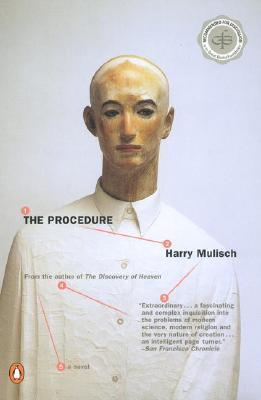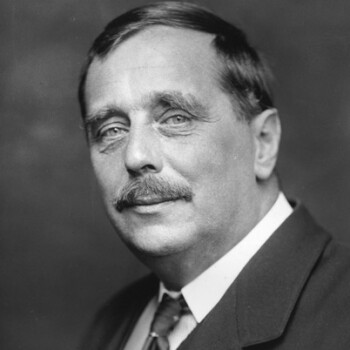Humanity's Ecological Dilemma in Cavendish’s “A Dialogue between a Man and an Oak Cutting Him Down”
- liammagin133
- May 16, 2025
- 5 min read
Updated: Jun 30, 2025
What if a tree could argue for its life? In Today's post, I look at how Margaret Cavendish explores humanity's troubled relationship with nature and makes her audience part of the discussion, leaving them the opportunity to take the final decision. Before reading the article, here is a link to first read the poem: https://xtf.lib.virginia.edu/xtf/view?docId=chadwyck_ep/uvaGenText/tei/chep_1.0848.xml;chunk.id=d131;toc.depth=1;toc.id=d121;brand=default;query=a%20dialogue%20between#1
(if more suitable, here is a pdf version of the article)
Recently, nature has been breaking decibel records to make herself heard, fed up with years of human submission and silencing. Interestingly, early modern poet Margaret Cavendish already gives a voice to nature in her poem “A Dialogue between an Oak and a Man Cutting Him Down”. In her 1653 poem, Cavendish addresses two different philosophical approaches of The Bible to nature. Moreover, by its nature of being a dialogue, the piece of poetry directly confronts the reader with his/her own ecological conscience.
Through the symbolism behind “the man”, the poem highlights two contrasting interpretations of The Bible’s teachings regarding human interactions with nature. In the book, one can read that “God said, [l]et us make man in our image, (…) and let them have dominion (…) over all the earth” (Genesis 1:26). Early in the poem, this philosophical approach to nature is embodied as the human voice is annoyed by the tree’s reluctance to being cut: “[w]hy grumble you” (29). After all, this should be the path to follow as it is God’s will, and the man discloses that men “desire like gods to be” (162). Furthermore, the biblical narrative says that it is God rather than nature that controls the natural environment. Indeed, God’s affirmation that there shall not “anymore be a flood” (Genesis 9:11) suggests Mother Nature’s lack of agency. This passivity therefore gives man carte blanche regarding nature. He can, should he wish to, transform trees into “ship[s]” (69) or “house[s]” (104). As this shows, the man is a symbolic representation of the biblical approach to nature that sees mankind as a subduer of Mother Nature. Nevertheless, The Bible also opens the door for a completely different relationship with nature. In Genesis again, one can read that “God took the man, and put him into the garden of Eden to dress it and to keep it” (Genesis 2:15). Consequently, mankind appears to be a caretaker of nature and not only a hierarchically superior force. Interestingly, the man in Cavendish’s poem embodies this ambiguity, reinforcing his symbolic meaning. Indeed, he worries about the tree’s state when he asks the following: “[w]hy do you wish to live (…) you [which] the sun with scorching heat do[es] burn” (130-2). This suggests that, beyond economic motives, the man still has thoughts about the oak’s wellbeing. He still takes care of it and, genuinely believes it when he says that it is better for the oak to become a ship (69). Although this belief may be because he is, as the oak says, a being who “live[s] in ignorance” (67), its presence is meaningful. Eventually, the poem deliberately omits to show the man kill the oak, underscoring his symbolic role as a figure torn between two conflicting biblical doctrines regarding nature. Just as The Bible leaves room for interpretation, Cavendish’s poem also withholds a definite ending regarding the destiny of the oak. This ambiguity shifts the focus from the man to the reader, inviting him/her to engage with the poem’s ecological theme through dialogical structure, which is what the next paragraph discusses.

The dialogical component of the poem amounts to a confrontation of the reader with his/her own ecological conscience. Leaving out the religious outline for a moment, the dialogue appears as one between a man, a synecdoche for mankind, and an oak, a synecdoche for nature. Initially, both voices of the poem seem to be each other’s opposite and do not understand each other as they both start their answers by “[w]hy” (1,29). But these questions are a sign of the two sides’ desire to open their mind. As Plato discusses in his Gorgias, reasoning through dialogue enables to discover the truth, and Cavendish’s poem exemplifies this dialectic. Indeed, the questions they address to each other, as well as their argumentation, illustrate their willingness to try to reach a conclusion despite having opposite points of view. They do not merely want to impress their vision on one another but take time to discuss as the oak builds on the potentiality of his transformation into a ship mentioned by the man: “[p]erchance my ship against a rock may hit” (85). On his side, the man does not directly cut the tree, but lets it speak. Moreover, when the man shares that the oak has “no pleasure (…), but misery” (131), he then takes time to consider what the oak answers and concludes that men are more miserable (146). Thereby, he acknowledges the oak’s agency as its voice influences him. Through the poem, the reader is reminded of this livelihood by the personification of the oak, but also by sensory images like the “gentle noise” that the “oak’s leaves” (7) make or the vivid greenery of these leaves (125). Consequently, the poem appears as a cooperation from both sides, rather than as an attempted domination from one. Cavendish’ use of platonic philosophy to highlight nature’s importance is not at all coincidental because as critic Timothy A. Mahoney notes, “central Platonic positions […] are perfectly compatible with the claim that humans have much to learn from the world of nature” (Mahoney 30). Furthermore, as the previous paragraph explains Cavendish concludes her poem ambiguously, suggesting that the man is torn between biblical ecocentrism and anthropocentrism. However, this hesitation is also caused by his reflection upon the oak’s arguments. This intensifies his philosophical tension and therefore reinforces the impossibility of him seeing him take a decision. The man of the poem cannot act, but the reader can. He or she is to interpret the ending and define which teaching the man will choose. With the open ending then, the reader is interpellated, bringing the issue out of the fiction and into to the real world. The reader comes as a third member of the dialogue, that continues within our own reality. By deciding whether the man cuts the oak, the reader reflects upon his/her own decision of subduing or taking care of nature.
Margaret Cavendish’s “A Dialogue between an Oak and a Man Cutting Him Down” broaches the topical concept of humanity’s relationship with his natural environment. By presenting the man as a symbol for The Bible’s ambiguity regarding nature, showing humanity as a subduer and a caretaker of it, it points out the ecological tension that arises from the book. Moreover, the poem’s dialogical form renders the poem interactive as the open ending turns to the reader for its interpretation, urging him to reflect upon his/her ecological conscience. The poem highlights that regardless of how timeless the question of nature’s treatment is, the answer depends on the decision we take today.
Works Cited:
Carroll, Robert P., and Stephen Prickett. The Bible: Authorized King James Version with Apocrypha. Oxford University Press, 2008.
Mahoney, Timothy A. Ethics and the Environment, 1997, Vol. 2, No. 1 (1997), pp. 25-41, https://www.jstor.org/stable/27766029
Platon. Gorgias. Translated by Monique Canto-Sperber, Flammarion, 2018.
© Liam Magin. All Rights Reserved. This work is the intellectual property of the author. Do not copy or redistribute without permission.
This post is an adapted version of an essay written as part of an assignment for the EN280 Module at Maynooth University.



Comments